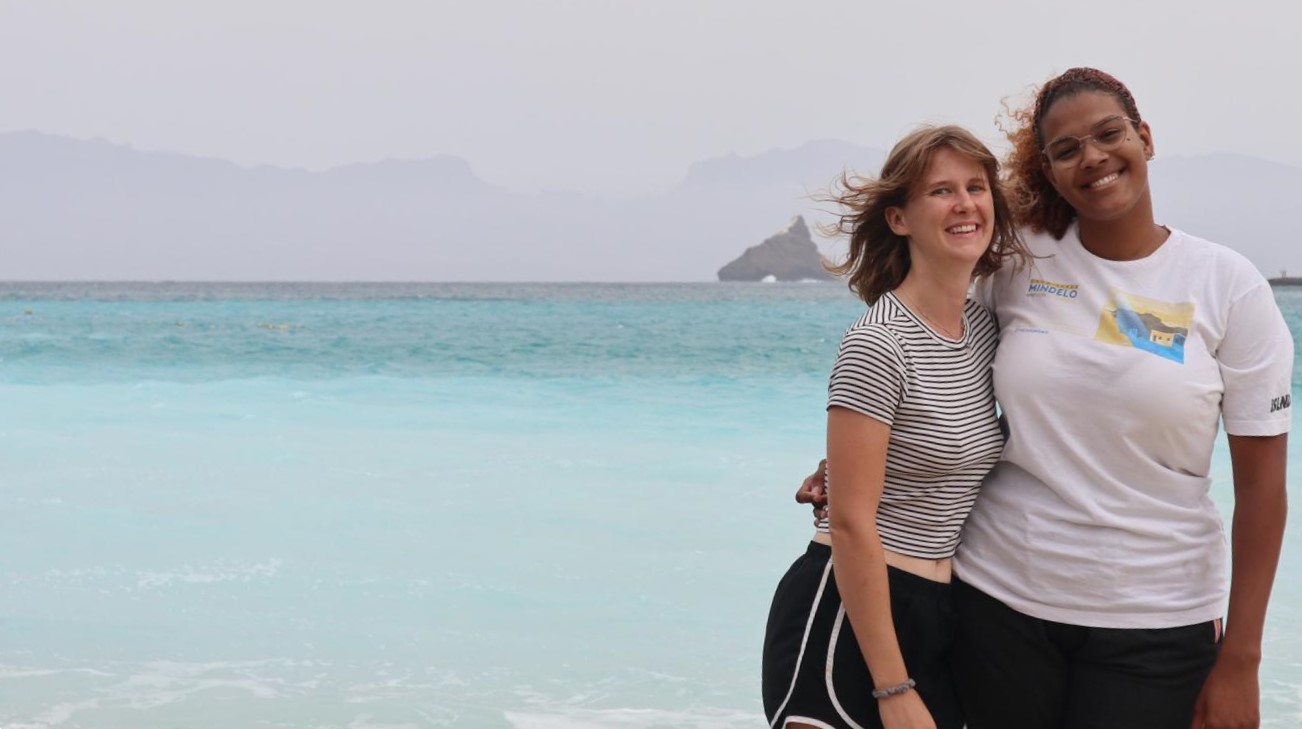This week we have been busy surveying the waters of Sermilik, a large glacier fjord on the east coastline and one of the few sites hereabouts that has been surveyed before. Why are we re-visiting this fjord when our other fieldsites were previously un-surveyed? Well, visiting new areas is exciting and we can perhaps find […]
Traze luz n escuridao – What happens to macroalgae when we deprive them of darkness? Pioneering research in Cabo Verde
Oi tud drt? – To read this Kriol words here, which say “Hi, everything fine?”, means GAME is back in Cabo Verde. This year, Melanie (Universidade Técnica do Atlântico, Cabo Verde) and Lotte (University of Freiburg, Germany) have the chance to work together as a binational team on a still largely unexplored topic: the influence […]
Nautilus Camera System
The NAUTILUS camera team (Shannon and Julia) arrived with four camera systems to record beaked whale prey found off the island of Terceira at various depths. Our aim is to learn more about the life history, occurrence and behavior of the animals living in the deep sea in order to increase our understanding of the […]
Nautilus-Kamerasystem
Das Kamerateam NAUTILUS (Shannon und Julia) ist mit insgesamt vier Kamera Systemen angereist, die in verschiedenen Tiefen vorwiegend die Beutetiere der hier vor der Insel Terceira vorkommenden Wale, aufzeichen sollen. Unser Ziel ist es mehr über die Lebensweise, das Vorkommen und auch das Verhalten der in der Tiefsee lebenden Tiere zu erfahren, um unser Verständnis […]
Echosounder
by Marie Guilpin To understand predator-prey interactions, it is essential to characterize and quantify the preyscape available to predators. One way to do so is to use hydroacoustic data. Essentially echosounders are active acoustic devices pinging at different frequencies, the echoes back from whichever is in the water column is then recorded. We used dual […]
Echosounder
von Marie Guilpin Um die Wechselwirkungen zwischen Räubern und Beutetieren zu verstehen, muss die Beutelandschaft, die den Räubern zur Verfügung steht, charakterisiert und quantifiziert werden. Eine Möglichkeit, dies zu tun, ist die Verwendung hydroakustischer Daten. Echolote sind im Wesentlichen aktive akustische Geräte, die auf verschiedenen Frequenzen schwingen und deren Echos in der Wassersäule aufgezeichnet werden. […]
“Balloon” Houses in the deep
There are many creatures suspended in the ocean that build elaborative feeding houses that have a special mission in carbon pump. One spectacular example are Appendicularians – pelagic tunicates known also as Larvaceans. As mucus net feeders, they build huge and really beautiful ‘houses’ around their bodies that comprise two layers of filters. By beating […]
Making the most of good (and bad) weather
As scientists onboard we all have a schedule for what we would like to achieve at sea. Much of this work has been planned for years with months of preparation and training. Arctic field work in this region is challenging due to poor weather and ice conditions for much of the year, so there are […]
A glimpse into the future of ocean exploration, inspired by the technology used on the RV Meteor M202 oceanographic expedition
For a marine biologist like me, it’s always a pleasure to take part in a multidisciplinary scientific campaign like M202 on a modern oceanographic vessel like the RV Meteor. In addition to the excitement of exploring the unknown that such a mission provides, the contact with researchers from different backgrounds and interests allows us to […]
Ein Blick in die Zukunft der Meeresforschung
Für einen Meeresbiologen wie mich ist es immer eine Freude, an einer multidisziplinären wissenschaftlichen Kampagne wie M202 auf einem modernen ozeanografischen Schiff wie der FS Meteor teilzunehmen. Neben dem Reiz, das Unbekannte zu erforschen, den solch eine Reise mit sich bringt, können wir von teilnehmenden ForscherInnen mit unterschiedlichen Hintergründen und Interessen lernen, neue wissenschaftliche Horizonte […]
